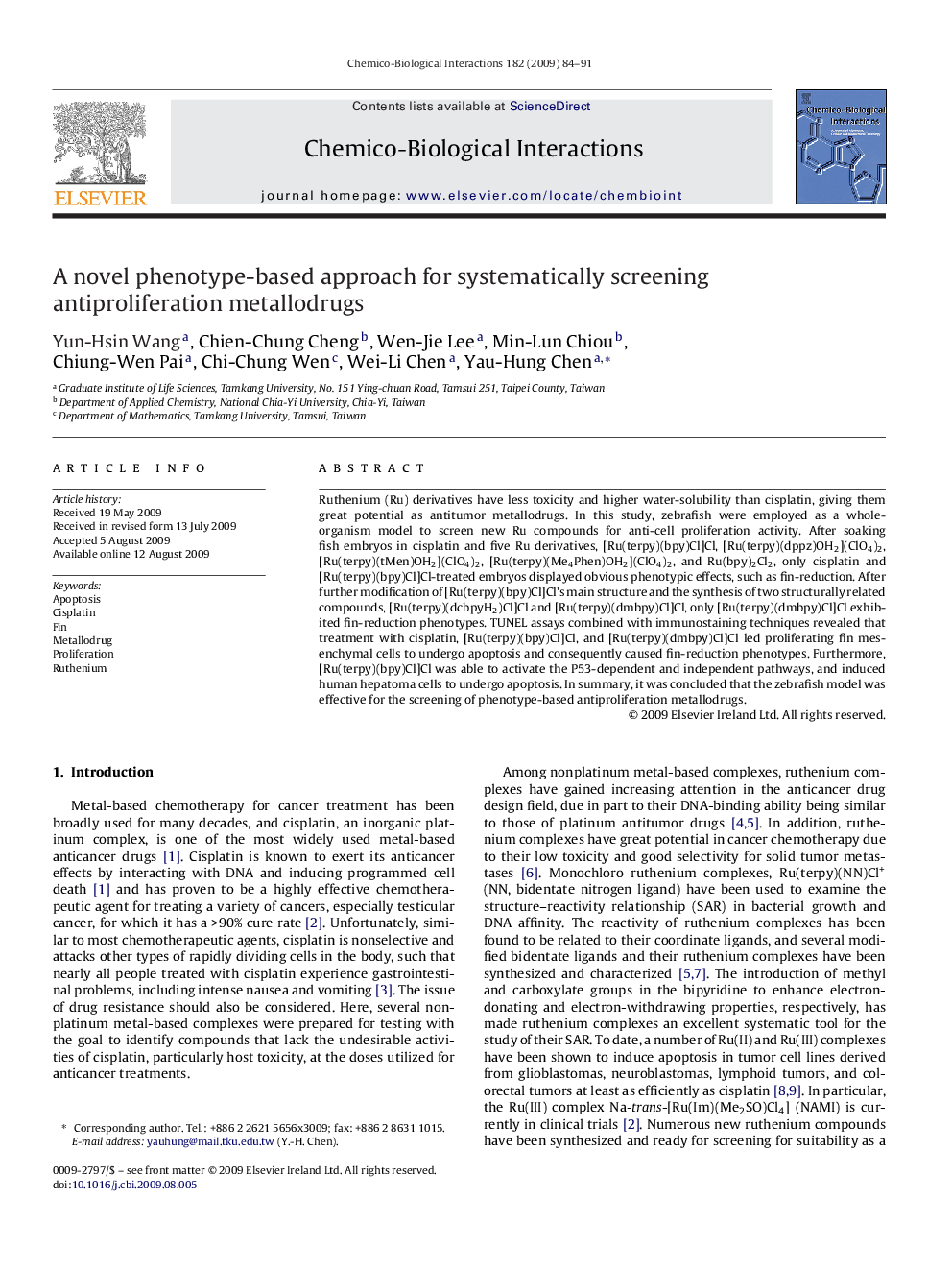| Article ID | Journal | Published Year | Pages | File Type |
|---|---|---|---|---|
| 2581272 | Chemico-Biological Interactions | 2009 | 8 Pages |
Ruthenium (Ru) derivatives have less toxicity and higher water-solubility than cisplatin, giving them great potential as antitumor metallodrugs. In this study, zebrafish were employed as a whole-organism model to screen new Ru compounds for anti-cell proliferation activity. After soaking fish embryos in cisplatin and five Ru derivatives, [Ru(terpy)(bpy)Cl]Cl, [Ru(terpy)(dppz)OH2](ClO4)2, [Ru(terpy)(tMen)OH2](ClO4)2, [Ru(terpy)(Me4Phen)OH2](ClO4)2, and Ru(bpy)2Cl2, only cisplatin and [Ru(terpy)(bpy)Cl]Cl-treated embryos displayed obvious phenotypic effects, such as fin-reduction. After further modification of [Ru(terpy)(bpy)Cl]Cl's main structure and the synthesis of two structurally related compounds, [Ru(terpy)(dcbpyH2)Cl]Cl and [Ru(terpy)(dmbpy)Cl]Cl, only [Ru(terpy)(dmbpy)Cl]Cl exhibited fin-reduction phenotypes. TUNEL assays combined with immunostaining techniques revealed that treatment with cisplatin, [Ru(terpy)(bpy)Cl]Cl, and [Ru(terpy)(dmbpy)Cl]Cl led proliferating fin mesenchymal cells to undergo apoptosis and consequently caused fin-reduction phenotypes. Furthermore, [Ru(terpy)(bpy)Cl]Cl was able to activate the P53-dependent and independent pathways, and induced human hepatoma cells to undergo apoptosis. In summary, it was concluded that the zebrafish model was effective for the screening of phenotype-based antiproliferation metallodrugs.
